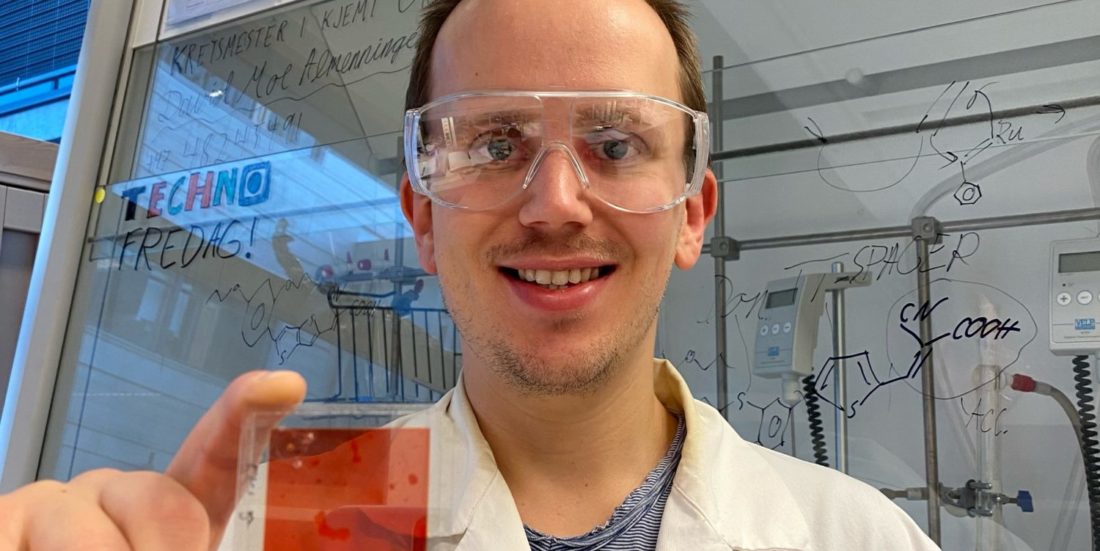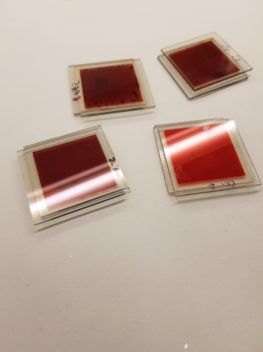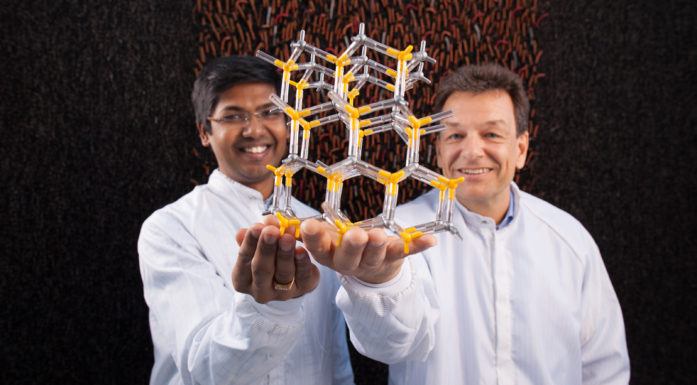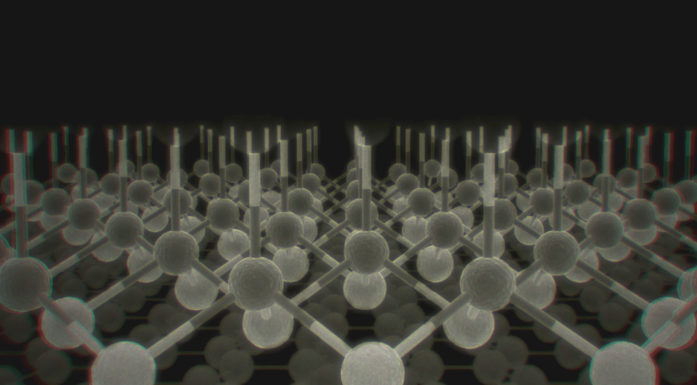Capturing energy from sunlight with dyes inspired by nature
Solar cells that use special dyes to collect light could one day be integrated into buildings. Researchers at NTNU are trying to find the best dyes for the job.
As sunlight filters through a forest canopy, chlorophyll is hard at work capturing the energy of photons. Inspired by nature, researchers at NTNU are working on light-capturing dyes for solar cells to generate electricity.
These aren’t the kind of solar cells you’ll see on the roof of a building. In those silicon solar cells, light hits one of two semiconductor layers and frees up electrons to jump between the layers. It’s the movement of these electrons that creates an electrical current. A dye-sensitised solar cell (DSSC) works in a similar way, but one of the semiconductor layers is replaced with a photosensitive dye that absorbs the light and releases electrons instead.
Dye-sensitised solar cells tend not to be as efficient at converting light into electricity as their silicon counterparts. But they work in low light conditions, and can be transparent and flexible, so are better suited to some applications. To really take full advantage of DSSCs, a research project partially funded by the Research Council of Norway (RCN) is looking for ways to step up their efficiency.
- You might also like: Silicon for solar cells becoming more environmentally friendly
Altered dyes harvest more light
In a paper published in the journal Dyes and Pigments, NTNU PhD candidate David Moe Almenningen and colleagues, Odd Reidar Gautun, Bård Helge Hoff and Svein Sunde have shown that adding a particular molecule to the dyes can increase its light harvesting properties – though so far the additional light comes at a cost.
To harvest light a dye needs to act as an electron donor and an electron acceptor.
“When this molecule is struck by a ray of sunlight, then the electron moves from the electron-rich part to the electron-poor part,” says Almenningen.
By adding something in-between the donor and acceptor, chemists are able to increase the amount of light the cell harvests.
Almenningen’s research is investigating the addition of compounds featuring thiophenes, a molecule similar to benzene but containing sulphur. Thiophenes are electron-rich, so would be expected to increase the light harvesting properties of the dye, he says. And recent experiments show that they do: the dye with the most thiophenes was the one that harvested most light.
- You might also like: Searching for the secret to more efficient solar cells
Not an improvement — yet
However, it turns out that increasing the amount of light a dye captures doesn’t automatically mean better solar cells. Put simply: you might get more electrons, but they don’t necessarily go where you want them to.
In his experiments, Almenningen found that though it absorbed the most light, the dye with the most thiophenes actually made the least efficient solar cell.
“You think you’re doing something brilliant by increasing the light harvesting ability, but then there are other reactions going on in the solar cell that are negatively affected by these modifications,” he says.
Offers potential advantages
He and his colleagues hope to find a way to avoid those counterproductive effects and take advantage of the improved light collection. Their next step is to try modifying the dye chemically so the electrons can only go in one direction. If this is successful, it could lead to more efficient solar cells.
Finding a way to increase the efficiency of DSSCs is one of the roadblocks to widespread use. The current highest efficiency is around 12%, compared with closer to 20% for a traditional commercial silicon solar cell.
If researchers are able to harness the light captured by dyes in these solar cells more effectively, DSSCs would potentially offer an advantage over traditional crystalline solar cells when it comes to scaling up: they are cheap to make, because they don’t need a clean room or vacuum technology.
One promising avenue for DSSCs would be to integrate them into buildings to capture the dimmer light that is typically found indoors.
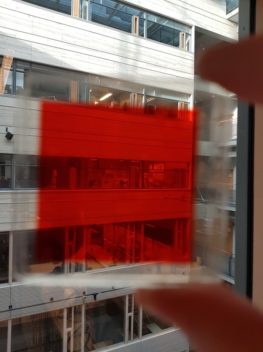
Transparent solar cells could be used as part of a building’s window or facade. Photo: David Moe Almenningen/NTNU
“That’s where these solar cells shine,” says Almenningen. “Also they look quite pretty. You can customise any colour you want, they can be see-through.”
For Almenningen, though, the reward is in figuring out how changing the chemical structure affects the performance of the dye: “The chemistry in itself is what’s fascinating.”
Reference: (2021) Effect of thiophene-based π-spacers on N-arylphenothiazine dyes for dye-sensitized solar cells. Dyes and pigments. vol. 185.
